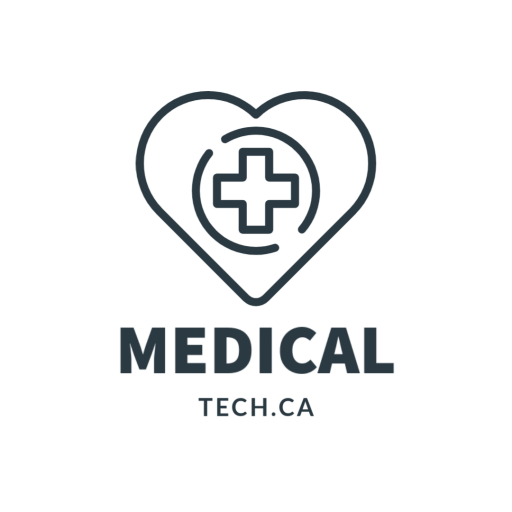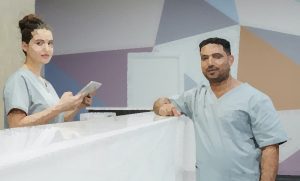
by medicaltechont | Feb 11, 2017 | Technology
It just might be one of the biggest discussions in digital health—the role of technology as a replacement for that innate human connection.
Let’s face it: technology isn’t always a friend of medicine. Ask almost any clinician and you’re almost certain to get a mixed review of how technology has changed medicine—for better and worse. The quintessential “human touch” of care is commonly substituted for complex analytics and processes that leave us with a very cold stethoscope that chills both patient and clinician. So, what really is it, tech or touch? It seems to be that the argument has been made for both sides, but an interesting option comes to us in the form of PeraHealth.
Read more at http://www.forbes.com/sites/johnnosta/2017/02/03/medical-tech-or-personal-touch-perahealth-has-cracked-the-code/#4a0a50f32f7e

by medicaltechont | Feb 7, 2015 | Canada
Life University is currently working with AlignLife to increase the number of doctors participating in the practice-based research network and also begin exploring daily visit data, insurance claims data and outcomes.
Each year the Association of Chiropractic Colleges hosts a Research Agenda Conference. This year’s conference will be hosted March 19 to 21 at Planet Hollywood in Las Vegas and AlignLife is pleased to announce there will be a segment on the first paper submitted by Health Missions.
Health Missions is a non-profit organization that AlignLife clinics nationwide contribute to. AlignLife is working with the Life team to increase the number of doctors participating in the practice-based research network and begin exploring daily visit data, insurance claims data and outcomes. This project will be continually evolving with research to validate the power of chiropractic.
The common concern about chiropractic research is the study group size, which is normally too small to provide validation of outcomes. AlignLife encourages all chiropractors to join them in the fight to prove, protect and provide natural health care. Interested parties should visit http://www.chirocolleges.org/accrac/schedule.html.
– See more at: http://www.canadianchiropractor.ca/collaboration/technology-aims-to-develop-large-scale-research-network-on-chiropractic-natural-health-care-4055#sthash.KEtpa1oh.dpuf
by medicaltechont | Oct 27, 2012 | lasers, Technology
DERMATOLOGISTS are good at spotting unusual bits of skin that might or might not be cancers. Testing whether they actually are, though, is quite literally a bloody pain. For a piece of skin to be identified as malignant or benign it must be cut out and sent to a laboratory for examination under a microscope. But a team of researchers led by Rainer Leitgeb, a physicist at the Medical University of Vienna, hope to change that. As they describe in Biomedical Optics Express, Dr Leitgeb and his colleagues are exploring a technique called optical coherence tomography (OCT), which they think will allow skin cancer to be diagnosed in situ.
OCT is a form of optical echolocation. It works by sending infra-red light into tissues and analysing what bounces back. The behaviour of the reflected rays yields information on the structures that they collided with. That, Dr Leitgeb hoped, could be used to generate a map of features just beneath the surface of the skin. Similar technology has been employed for nearly two decades by eye doctors and Dr Leitgeb felt that, with a bit of tinkering, it should work for skin as well.
Read more
by medicaltechont | Mar 31, 2010 | Uncategorized
The Liberal government has quietly scrapped a mandatory review of a new health bureaucracy.
Premier Dalton McGuinty says the legislative review, which was to have taken place by the end of March, was dropped because Ontario’s 14 Local Health Integration Networks (or LHINs) are not yet fully operational. The LHINs took effect on April 1, 2007.
“As it turns out, all of the responsibilities that we wanted the LHINs to take on, they have yet to take on,” he told the legislature.
“In particular, a big part of their new responsibilities would be long-term care (and they) have not yet done that.”
Progressive Conservative leader Tim Hudak said the review was much needed in light of a recent spending scandal at eHealth Ontario. Millions in untendered contracts were handed out at that agency, which was criticized as the worst-managed agency Auditor General Jim McCarter had ever seen.
Hudak contends health bureaucrats at various LHINs have handed out at least $7 million in untendered contracts. “I suspect Dalton McGuinty’s motivation is clear,” he said. “He does not want to have any more scrutiny of the growing rot at his LHINs, which resembles very much the kind of scandalous spending we saw at eHealth.”
The province designed LHINs to enable better local health planning and more local freedom in distributing health dollars to the neediest recipients. Ottawa is part of the Champlain LHIN, which co-ordinates and funds hospitals, community care access centres, addictions and mental health agencies, community support services, community health centres and long-term care homes across eastern Ontario. It is headed by Dr. Robert Cushman.
Read More
by medicaltechont | Mar 19, 2010 | Healthcare, Technology
Mar 17, 2010
Stuttgart, Germany – Manufacturers of modern medical instruments and implants are faced with enormous challenges. Structures are becoming increasingly smaller, yet demands for the highest quality and accuracy are still expected to be met. This means flawless, smooth surfaces without any residue. “Laser micro processing is the best option here as it removes material without any contact. Furthermore, excellent beam quality and accurate control prevent the spreading of heat or the occurrence of material damage,” explains Mandy Gebhardt, head of marketing at 3D-Micromac.
Read more…



